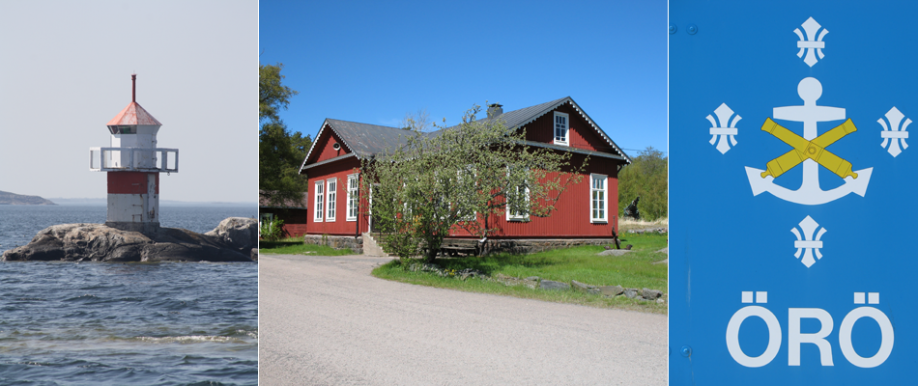
Örö – visit an Island Coastal Artillery Fortress in the Archipelago
If you’re aiming to visit Bengtskär, Hanko or the southern archipelago, it’s well worth checking to see if you can visit Örö – an island coastal artillery fortress in the archipelago that offers up some unique scenery and wildlife as well as the interesting military and cultural history. Örö is still a military area and as such is closed to individual visitors, but in summer it’s possible to visit Örö through organized and guided excursions by boat or on a traditional archipelago sailing ship. Four different companies run trips to Örö and in 2013 the number of days on which visits to the island are permitted to visit has been increased from fifteen to twenty.
Guided visits combine both the history of the island and nature tours, with boats leaving from the small port of Kasnäs. Guided tours are available in Finnish and Swedish but guides will generally also speak English. (More on guided tours at the end of this post, including links and contact details). And a note: aside from my post here, you will find very little of this information in English elsewhere – much of what you will read here has been gathered from bits and pieces on largely Finnish-language websites and articles and translated. I may have made the odd mistake in translating so if you’re Finnish and you catch me out on anything, let me know and I’ll correct it.
Örö Luontokohde Turunmaan saaristossa – this video was uploaded onto Youtube as of Feb 2015 and is a beautiful introduction t the island and fortress of Örö. Captions in Finnish.
The history of the Fortress of Örö
The fort’s history dates back to the 1910’s, when Tsarist Russia (of which Finland was then part) began to build (or modernize existing forts) a chain of fortifications on either side of the Gulf of Finland to protect the capital city of St Petersburg from attack from the sea. During the First World War, Russia began to fortify western Finland to guard against a possible German invasion. This fortification project resulted in the forts of Örö, Utö and Lypertö among others, all of which then fell into Finnish possession after Finland’s Declaration of Independence in 1917. The Åland Islands had also been fortified, but the nine batteries built there were demolished later due to an international agreement regarding the demilitarization of Åland.
At the time that Örö was taken over for military use, the island was common pasture for several villages. The Russians expropriated Örö in its entirety, paying no compensation to the villagers in Rosala and Pasila for the loss of their grazing land (after independence, when Finland continued to maintain the island as a military position, the islanders were granted full compensation for the value of land). Construction of the fortifications began in 1915, after the outbreak of World War One and was carried out using labourers brought in from Asiatic areas of the Russian Empire (labourers who died while working were buried on the island. Soldiers had also been buried on the island a hundred years earlier, during the 1808-1809 war. Örö was then used as a naval base for the Swedish fleet and sailors and soldiers who died of both scurvy and sea battles, including at Lövö, are buried here).
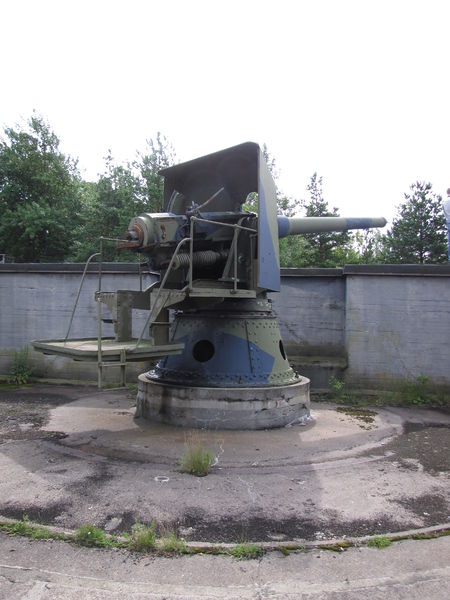
152mm-45-C of the type used at Oro (this example from Kuivasaari)
The first stage of construction saw the building of a narrow-gauge railway and about 10 km’s of cobblestone roads on the island, together with the addition of a large number of buildings. The fortifications were equipped with a battery of four 305 mm cannon, two heavy batteries with four 152mm and four 120mm guns and later, an anti-aircraft battery of three 76 mm cannon. Some 2,000 military personnel manned the fortifications during World War One.
When Finland became independent in 1917, the island was handed over to Finland although the Russian troops only left in Spring 1918. The fort remained ungarrisoned until 1920, when the Finnish military moved in in the aftermath of the 1918 Civil War and the creation of Finland’s defence forces. In 1920 the guns were restored and renovated. Emplacements were covered by anti splinter armoured plates and concrete walls at the rear. Örö’s location was not as strategically important for an independent Finland as it had been for Imperial Russia and the fort was therefore used more as a training base.
After independence, the Coastal Artillery Units of Finland were organized as a single artillery regiment with three coastal artillery battalions – I Battalion, based in Helsinki, was the nearest to Örö. In 1919 these three battalions were formed into independent coastal artillery regiments and the coastal artillery batteries of Örö, Utö and Russarö were garrisoned by the V Artillery Battalion of Coastal Artillery Regiment 1 (Rannikkotykistörykmentti 1, RT 1). In a further organization change in 1921 units on the western Gulf of Finland and Turku were separated from RT 1 and formed into the Turku Independent Coastal Artillery Battalion (Turun Erillinen Rannikkotykistöpatteristo), consisting of the batteries on Örö, Russarö, Utö and Lypertö. The battalion was later renamed 1st Independent Coastal Artillery Battalion (1. Erillinen Rannikkotykistöpatteristo).
Through the 1920’s and 1930’s, Örö was maintained as a coastal artillery fortification and was used primarily for training, although in the late 1930’s work began on modernizing and expanding the fort. On the outbreak of World War Two, the Battery on Örö was equipped with 2 x 305mm and 4 x152mm guns. Örö played no part in the fighting during the Winter War but in 1941 took part in the fighting for Hanko (occupied by Soviet forces after the Winter War until they were driven out at the start of the Continuation War). An anti-aircraft battery was added at sometime during this period. Örö also played a part in the Battle of Bengtskär, with the coastal batteries of Örö supporting the Finnish defenders of Bengtskär, while a counter-attack force from the soldiers on Örö and Hiittinen landed on Bengtskär and repelled the invaders. After the Soviets were driven out of Hanko, Örö saw no further fighting during the remainder of the Continuation War (World War Two).
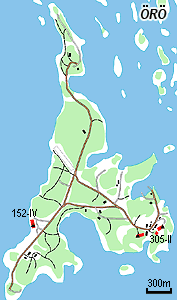
Map of Oro
After the WW2 years, the fort functioned up until 2005 as a training fortification for the Finnish Defence Forces. In the late 1960’s, the heavy artillery batteries on Örö had been equipped with 152/50 T guns. Old heavy anti-aircraft guns, primarily the 76 Itk/31 model, were used as light coastal guns and the Örö 2/305/52 O battery was kept in use. Anti-aircraft and close defence weapons were mainly from Second World War era or older. Tactical improvements were made to fire control methods however, and radar began to be used.
In the 1970’s, Örö was used for NCO and Specialist training by the Turku Coastal Artillery Regiment (Turun Rannikkotykistörykmentti). The island is currently used by the Finnish Defence Forces for combat training and live firing exercises although since 2005 such military activities have been intermittent and there are only a small number of military personnel based on the island. Örö was first opened to the public in 2006, but as the island is still used as a training and live firing area for the armed forces, access is prohibited except through organized trips.
In the Jamina 2012 Defence Exercise, the Navy used Örö as an exercise area. Below are a couple of photos taken at Örö during the exercise (and no, tours are not scheduled during military exercises so you won’t be lucky enough to see anything like this on a visit….)
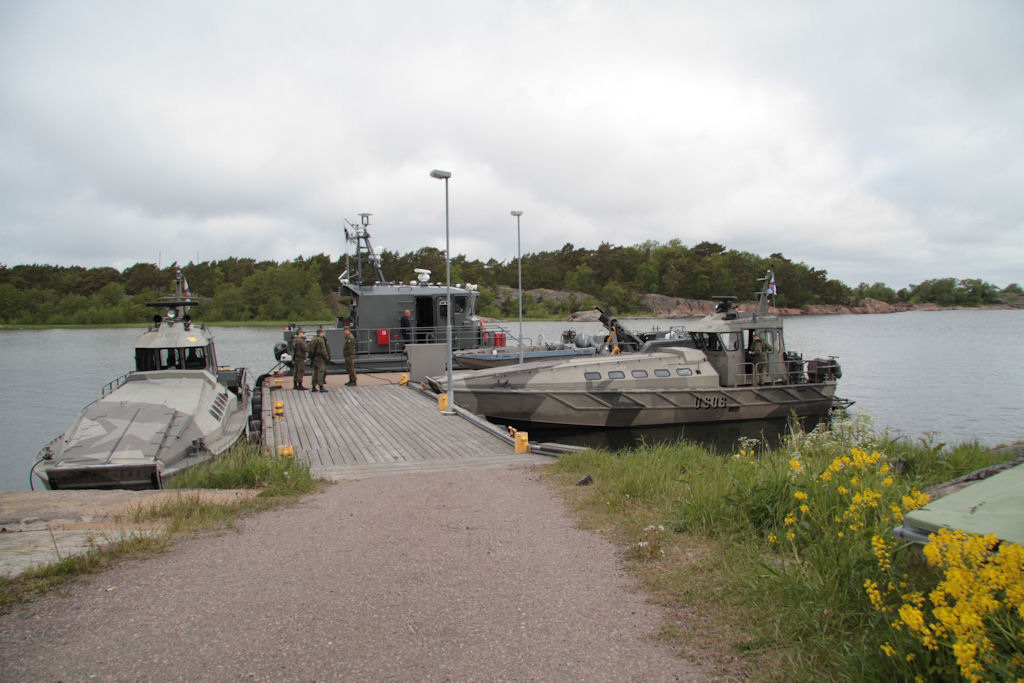
Jurmo (boat type) docked at Örö – Exercise Jamina 2012
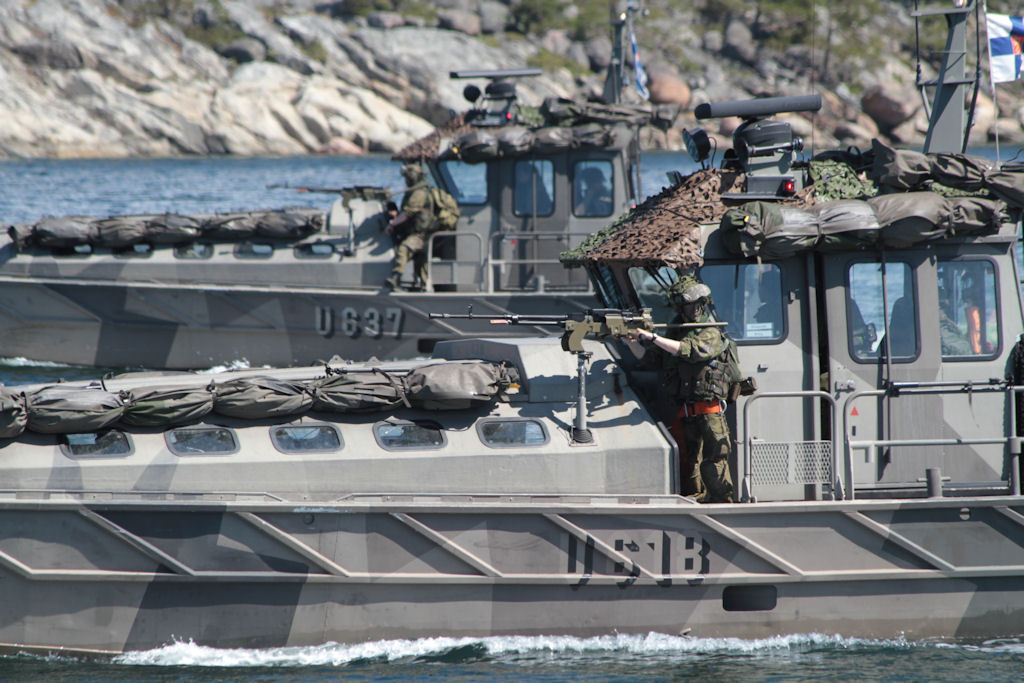
Jurmo (boat type) near Örö – Exercise Jamina 2012
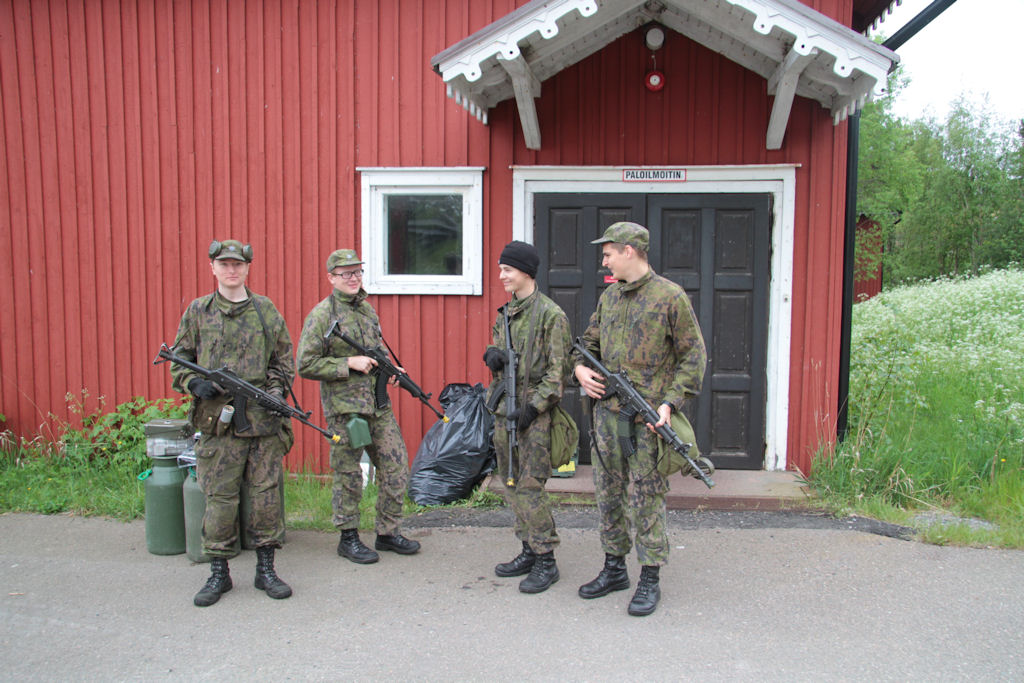
Naval Reconnaisance Soldiers on Örö – Exercise Jamina 2012
However, the Defence Forces will hand over control of Örö for civilian use in 2014. The goal is to complete planning for the transition and integrate Örö as part of the Archipelago National Park for early 2015. At the end of this post, there are a collection of photographs of Örö and its fortifications.
The Natural Environment of Örö
The island of Örö is located in the Municipality of Kemiönsaari, in the area encompassed by the Archipelago Sea National Park. The island is part of the second Salpausselkä esker with impressive sandy beaches, dunes, rocky stone fields and embankments and a valuable concentration of endangered species. In the past Örö was used for grazing and this resulted in the clearing of meadows and other open sun-exposed areas. Former meadows and fields now function intermittently as shooting ranges and landing sites for helicopters and thanks to the Defence Forces, have been maintained as open landscape.
Little used by the military over the last two decades, Örö is in an exceptionally natural state and contains several natural habitats to be conserved under the Directive and Nature Conservation Act (the most significant habitat being the esker area, which covers most of Örö and which consists mostly of sandy ground and dry boreal forest). Örö’s western sandy beach is one of the most impressive in Finland and the most valuable for the diversity of its rare and threatened beach vegetation and species. Sea wheat grass (Elimys fractus ssp. boreoatlanticus), which is critically endangered and under strict protection, is found in Finland only in the military area on Örö and to a smaller extent on the island of Jurmo. On the western shore also grows the rare sea kale (Crambe maritima), sea sedge (Carex arenaria) and the nationally vulnerable marram grass (Ammophila arenaria).
The island’s vegetation is highly diverse, its insect species are uniquely abundant and endangered species, particularly butterflies, have found a home on the island. Örö’s diverse and extensive natural environments are in part the reason that the threatened species have remained so healthy in the area. Especially important are habitats for butterflies (for which Örö Fort is one of Finland’s most valuable natural sites) and plant species in the open and dry areas e.g. at the centre of the island and on the helicopter field. Örö also offers a good environment for several bird species classified as threatened and protected by the Birds Directive, as well as for over 160 different types of mushrooms.
The military live firing exercises, tilling of the land andregular clearing of trees has resulted in hot and dry areas developing on the island that are suitable living environments for many species of butterfly. More than 1,500 species of butterfly are known on the island, and more than one hundred of them are from threatened or near threatened species. The numbers are significant, as a total of around 2,500 species of butterfly are known in Finland, with around 180 classified as threatened or near threatened. Although populations of the island’s threatened species have decreased considerably elsewhere in Finland, some of the species are quite numerous on Örö.
(The videoclip is in Finnish but the visuals will give you a good idea of what to expect)
Restrictions concerning entry, the scarcity of buildings and low human use of the island have in part contributed to this. For example the Middle Lace Border (Scopula decorata), which was classified as extinct in Finland in the 70s, was still found on Örö at the end of the 1990’s. The nationally vulnerable large Apollo butterfly (Parnassius apollo), which is protected by the Nature Conservation Decree can currently be found on Örö. It is important to note that butterfly species cannot be protected without also protecting their habitats. The most significant threat to the island’s threatened species is the terrain becoming overgrown. This has been slowed by clearing pine and juniper trees and by means of moderate wear on dry areas, e.g. on the helicopter field. The Defence Forces’ activities on the island have contributed to maintaining the area’s diversity of species by maintaining environments that are favorable for them.
Visiting Örö
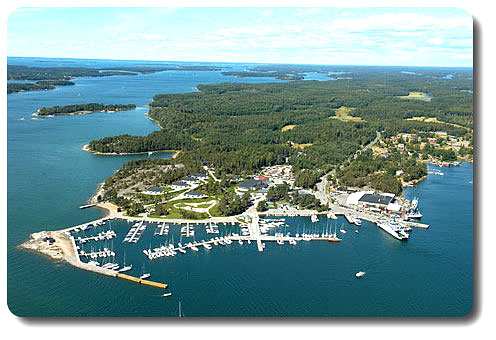
The small port of Kasnäs, departure point for most trips to Örö
Visits to Örö fall within the services offered by businesses operating within the Archipelago National Park. These businesses have a cooperation agreement with Metsähallitus and follow the principles of sustainable nature tourism when operating in the national park. All tours of the Island are walking tours covering about 4 km in an hour and a half minimum, although longer tours may cover more distance. You will need comfortable footwear and should be able to walk this distance comfortably. The trip is not recommended if your mobility is reduced due to age or if you suffer from medical or heart problems. Örö is one of the outer islands and getting help in the case of an emergency takes a long time. If you’re driving from Turku allow at least 2 hours to get to the boat departure points, if from Helsinki allow at least 3 hours. If you’re unfamiliar with Finland, allow more time. Örö currently remains a military area and the island can be visited only on a guided tour. You are not permitted to visit the island on your own boat. Advance reservations for visits are required as the Fort is a military area where movement is restricted and live-firing exercises take place. The Finnish Defence Forces have set Tour Companies the following conditions for visiting the island which MUST be complied with:
Guided Tours of Örö – Important Note on Special Conditions
- Participants’ names must be submitted by the Tour Companies to the Finnish Defence Forces in advance of the trip.
- Proof of ID is required for everyone over 15-year-olds.
- Foreign (non-Finnish citizenship) personal data shall be submitted to the tour operator at least 14 days before the trip
- The participants shall remain with the tour group at all times, going off on your own is forbidden
- Smoking and naked flames are prohibited on the island
- Photography of all military equipment is prohibited
- Photographs without permission of the Defence Forces are prohibited.
Important Note for non-Finnish Visitors to Örö: Please note that you need to submit personal data to the tour operator at least 14 days before the trip. If you wish to visit Örö, you will need to make arrangements with the Tour Company well in advance. Check the current situation with the Tour Companies that run trips to Örö well before you plan to visit.
Insects: Mosquitoes and Horseflies can be pretty bad. Bring a good insect repellent with you. Best to also wear long-sleeved shirt and trousers. You can also check with the tour company when you book as to what’s appropriate.
As of 2013, the following companies run Guided Tours to Örö. Please visit the company websites for more detail.
Archipelago Booking Finland Ltd Archipelago Booking Finland Ltd will book visitors to Örö on the sailing Schooner Inga and the traditional Yacht Eugenia.
Visiting Örö on the sailing schooner Inga
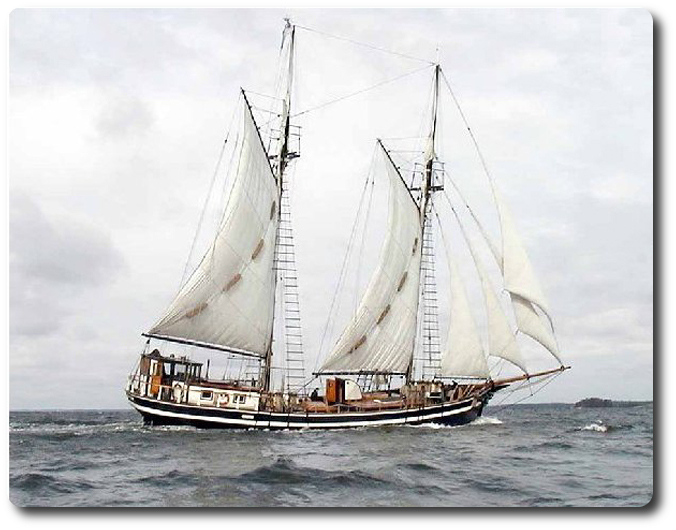
Visit Örö on the sailing schooner Inga
During the summer of 2012 the schooner Inga will sail to the fortress island Örö 15 times, 7 of them only for organized groups. The day-trip includes sailing, a one and a half hour guided walking tour of the island with a special emphasis on the nature and history of the island, and lunch. The crew of Inga show the art of traditional sailing. Guests are welcome to participate in the sailing of the schooner. Inga carries a maximum of 45 passengers. Trip schedules on Inga are generally as follows:
- 10am: Meet at the Nature Centre Blåmusslan. Tickets will be checked, as will the identification of participants. A short guided tour of Blåmusslan.
- 10.45am: Departure of Inga. Preparing the sails, the crew tells the passengers about traditional sailing vessels. Lunch served on board: Fish soup and traditional archipelago bread
- 1 pm: Arrival on Örö. Walk to the south end of the island and back, a distance of approx. 4 km. Historical guided tour visiting the island’s 12 military barracks and the Obuhov cannons. Guided nature tour of the island by the nature guide from Blåmusslan.
- 3.30pm Return to the schooner. Coffee is served and the bar opens.
- 4.45 pm Arrival in Kasnäs.
Pricing
- 79 € per person (including 10 and 24 % VAT)
- Children aged 6-12: 39.50 € per person
The price includes the trip, the lunch, the guide, a bottle of water and coffe or tea. Questions and booking on the company’s website. The trip has to be paid in advance. Passenger identification is necessary (see the company website for specifics).
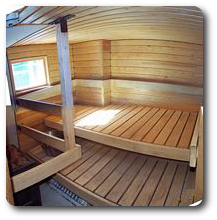
Every self-respecting Finnish schooner should have a Sauna – Inga is no exception
Visiting Örö on the traditional yacht Eugenia
Through July 2013, Eugenia sails once a week to Örö, departing from the small port of Kasnäs. You should check the website for specific dates.
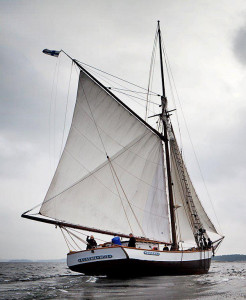
You can also visit Örö on the traditional sailing boat Eugenia
No specific schedule is listed, but trips on Eugenia include sailing to and from Örö, leaving Kasnäs at 10am and returning at 5.15pm. A two and a half hour guided walk on the island is included. On the way to the island sails are set and lunch will be served. The crew will give a presentation on traditional sailing ships and the archipelago and passengers may take part in setting the sails. During the island walk guides will talk about the history and the nature of the island. Pricing
- 60 € per person
- Children aged 6-12: 30 € per person
The price includes the trip, a fish soup lunch, coffee and a roll, sailing activities and a guided visit. Questions and booking on the company’s website. As with all visits to Örö, passenger identification is necessary (see the company website for specifics)!
Rib-Safarit
Rib Safari started offering trips to Örö in 2013. Rib Safari uses Rigid Inflatable Boats (RIB) designed for use in extreme marine conditions. Trips are operated for a maximum of 12 and a minimum of 6 people (less than 6 will result in the trip being cancelled). Visits to Örö include the boat trip, two and a half hours on the island, lunch and coffee. Reservations can be made through Rib Safari website or by phone 0400-530541/Petri Järvinen or 0400-920 937/Petteri Santa Lahti / or through Finland Archipelago Booking 02-410 6600 www.suomensaaristovaraus.fi
The easiest way to get to the departure point at the small port of Kasnäs is to drive. Drive through Kasnäs to the quay, where the public road ends. The boat to Örö leaves from the concrete pier, which is equipped with a blue Oro shield. Parking is available in the Sinisimpukan luontokeskuksen (Mussel Visitor Centre) courtyard. Trip schedules with Rib Safari are generally as follows:
- 11am: Depart Kasnäs on Rib boat.
- 11.30am: Arrival on Örö. 12-inch Obukhov cannon demonstration and a visit to a cannon in the yard in cooperation with the Turku Coastal Artillery Regiment Association
- 12.45 pm: Walking tour of the island, covering the fortress’s unique history and nature..
- 2.00pm: Departure for Kasnäs.
- 2.15 pm Arrival in Kasnäs.
Pricing
- 85 € per person
- Children aged 4-14: 40 € per person
The price includes the boat trip, lunch and the guided visit Questions and booking (included scheduled trips and seat availability) on the company’s website. The trip has to be paid in advance. Passenger identification is necessary (see the company website for specifics)! Rib Safari Boats
Wilson Charter
(Please note, Wilson Charter’s website is in Finnish only but if you use Google translate, you should be able to figure it out. Places on these trips are limited so please contact well in advance to ensure you can get on. Wilson Charter can be contacted via their website, by email at info (at) wilsoncharter.fi or by phone – Daniel Wilson on 575 050-5636 or Virpi Heino on 266 050-5514.
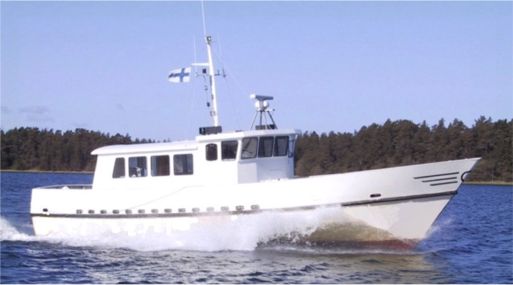
Visit Örö with Wilson Charters on the MS Linnea
Through the summer of 2013 through to early August. Wilson Charters will be running guided visits to Örö. The full-day trip includes a 45 minute boat trip, three and a half hours on the island with a picnic lunch of potato salad, smoked salmon, gubbröra (= mishmash), cucumber, archipelago bread, butter and water. Dessert: Coffee and a donut.
The easiest way to get to the departure point at the small port of Kasnäs is to drive. Drive through Kasnäs to the quay, where the public road ends. The boat to Örös leaves from the concrete pier, which is equipped with a blue Oro shield. Parking is available in the Sinisimpukan luontokeskuksen (Mussel Visitor Centre) courtyard. Trip schedules on M/S Linnea are generally as follows:
- 10.30 am: Leave from Kasnäs Pier on M/S Linnea.
- 11.15 am: Arrive at Örö. Start walking tour of the island, covering the fortress’s unique history and nature. Your guide explains the island’s unique wildlife and history of the fort.
- 1.15 pm: Picnic lunch in the fort cafeteria.
- 2.00 pm: 12-inch Obukhov cannon demonstration and a visit to a cannon in the yard in cooperation with the Turku Coastal Artillery Regiment Association
- 2.45pm Depart for Kasnäs. Coffee and a Donut.
- 3.30 pm: Arrive at Kasnäs
Pricing
- 56 € per person
- Children aged 4-14: 28 € per person
The price includes the boat trip, lunch and the guided visit. Questions and booking (included scheduled trips and seat availability) on the company’s website. The trip has to be paid in advance. Passenger identification is necessary (see the company website for specifics).
Recommendations
Each of the Companies listed above has their own advantages – Rib Safari offer a high speed rigid inflatable experience with a short visit to Örö. Inga and Eugenia offer a unique sailing experience as well as a visit to Örö while Wilson Charters offers the most time actually spent on Örö itself, which will be of definite interest to those interested in a closer look at the fortifications. Whichever you select, the island fortress of Örö is a unique opportunity to visit an old Coastal Artillery Fortress dating back to the First World War that is still in good condition and with the guns still intact and in place.You’ll also get a good look at an untouched natural environment.
The guided tour will take you from the landing place where your identification is checked by the military, and past the old red-painted wooden buildings and barracks of the military base. You’ll see the old Twelve inch Obukhov cannons that the batteries were equipped with even after WW2 – the barrels of these guns weigh 50 tons each. As late as the 1960’s, these guns were still in use. They could fire a shell 40 kilometers and conscripts were told how a shell had accidentally sunk a boat in the port of Hanko. You’ll see old shooting ranges and walk the cobblestoned road that was built back in the First World War. The island itself is peaceful and quiet. Since 2005 only occasional military exercises have taken place on Örö and the military will soon completely leave the island.
The military buildings are largely empty and in the past three years, even the water and sewerage systems have been turned off. The intention after the military depart is to develop tourism on the island, but without impacting the natural environment. In the meantime, Örö is waiting just a short boat ride from Kasnäs, with only a few groups of tourists visiting the fort each year. What follows is a collection of photos of the old guns, fortifications and military buildings on Örö.
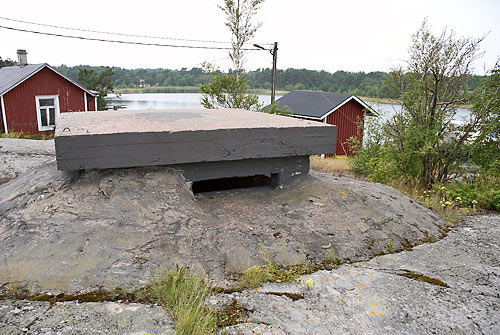
This concrete observation post greets everyone who comes to the island. Welcome to Örö!
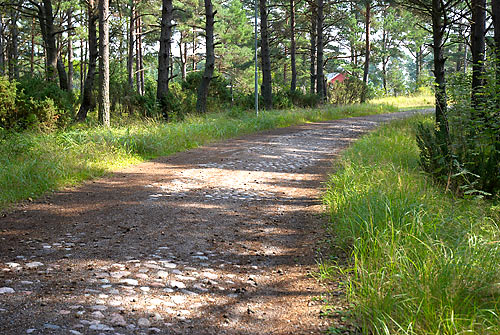
Cobblestone Road built by the Russians early in WW1 as fortification construction started.
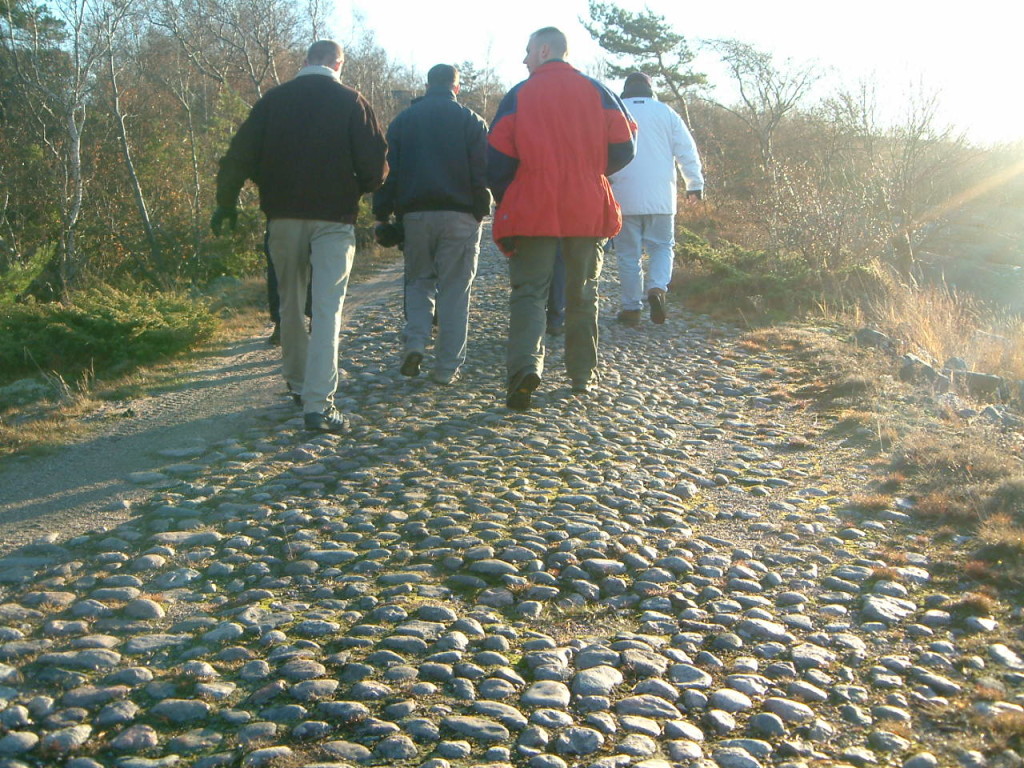
Walking the old military road, Örö
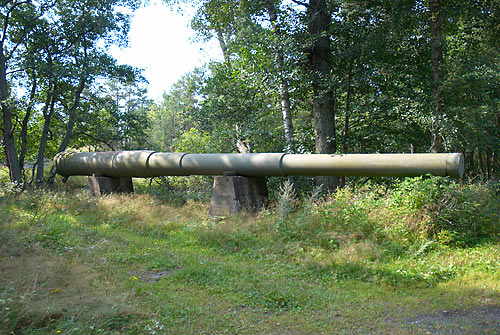
12″ Obukhovskiy gun barrel – manufactured by the Obukhovskiy Steel plant, 1914. No. 91 is inscribed on the breach.
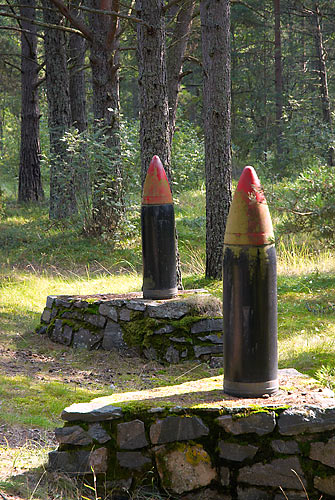
12″ Artillery Shells
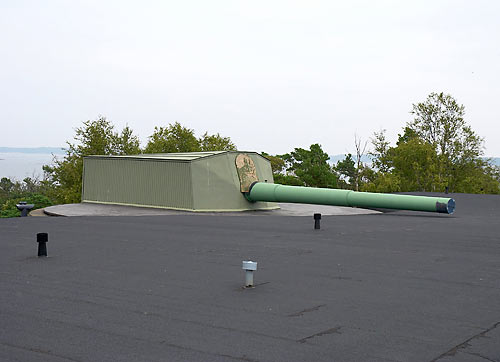
305/52 guns with open mountings – A.Dukelskij construction. Gun’s mountings were made by Metallicheskij Zavod in St.Petersburg.
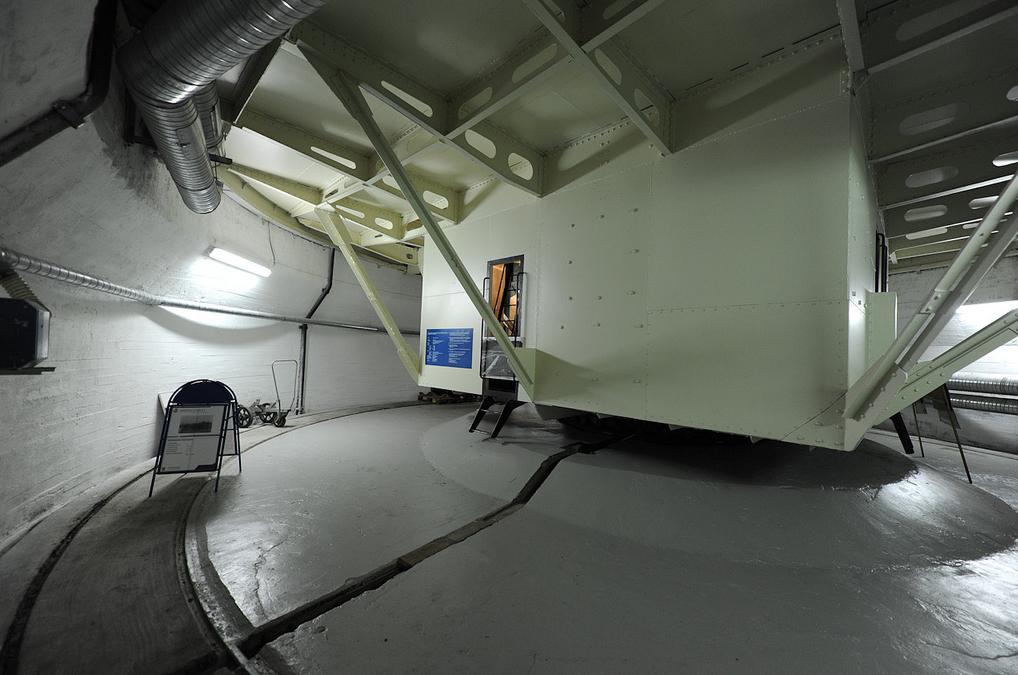
The underside of a functioning 305mm (12″) Gun Turret.
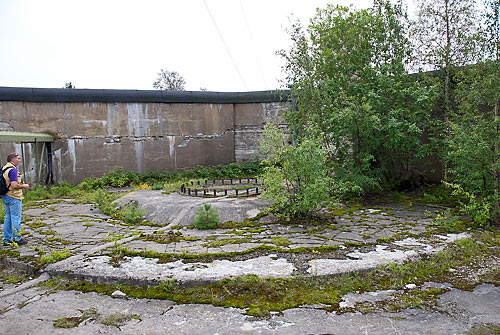
In the 1930’s two guns were dismounted and removed to Ristiniemi cape in Vyborg bay, leaving only the empty emplacements behind
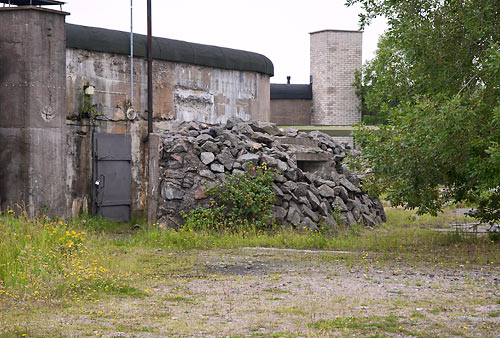
The entrance to a gun emplacement is defended by a concrete pillbox, covered by granite rocks.
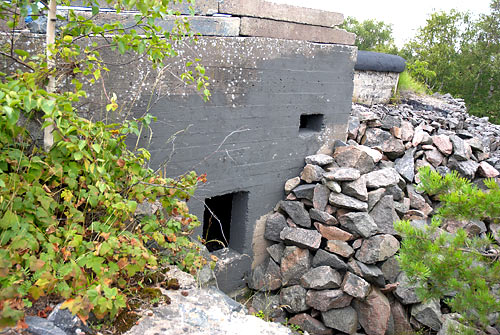
Machinegun pillbox in front of the artillery block?
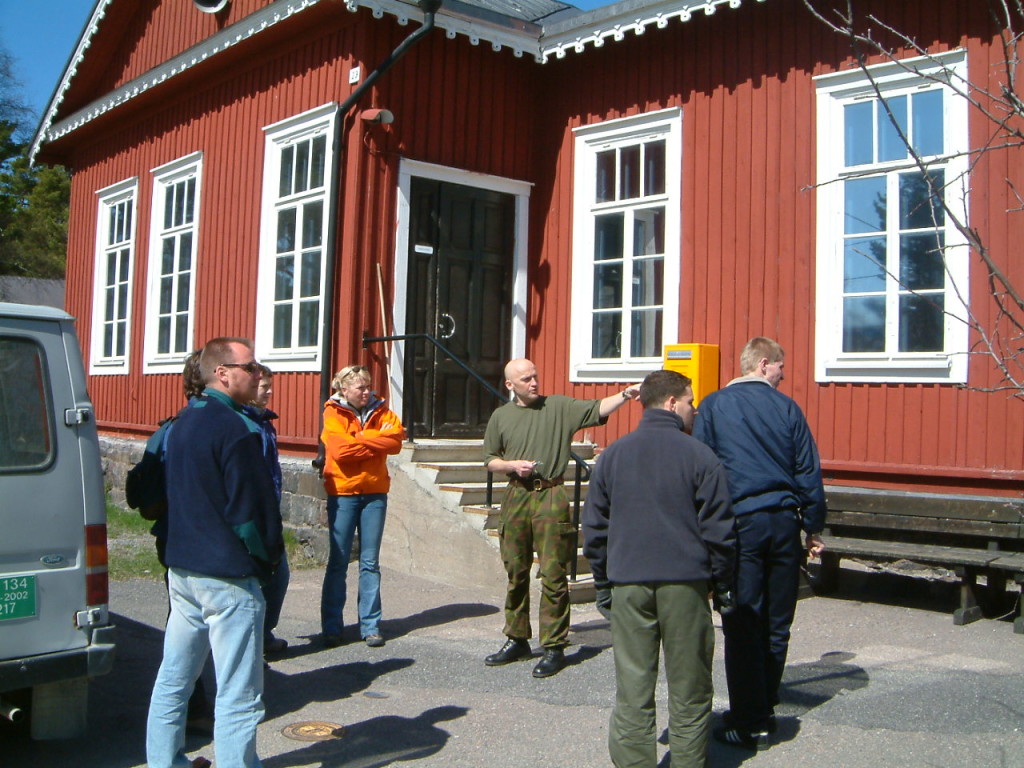
Örö – tour group outside the old Officer’s Mess
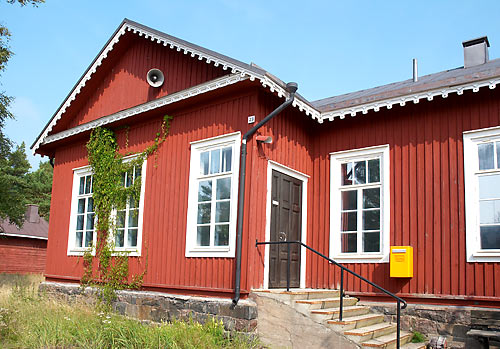
Örö – old Officers Mess
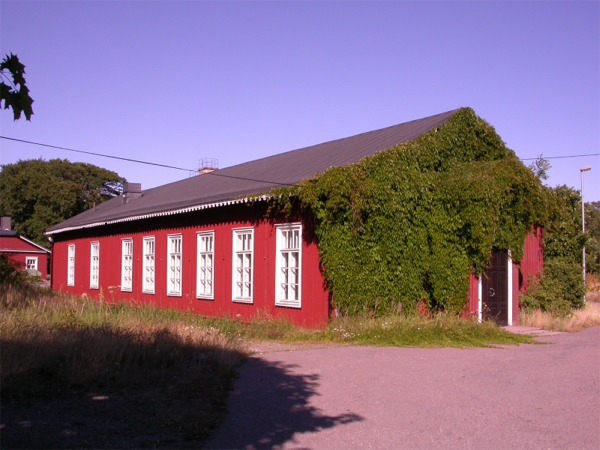
Örö – old military building
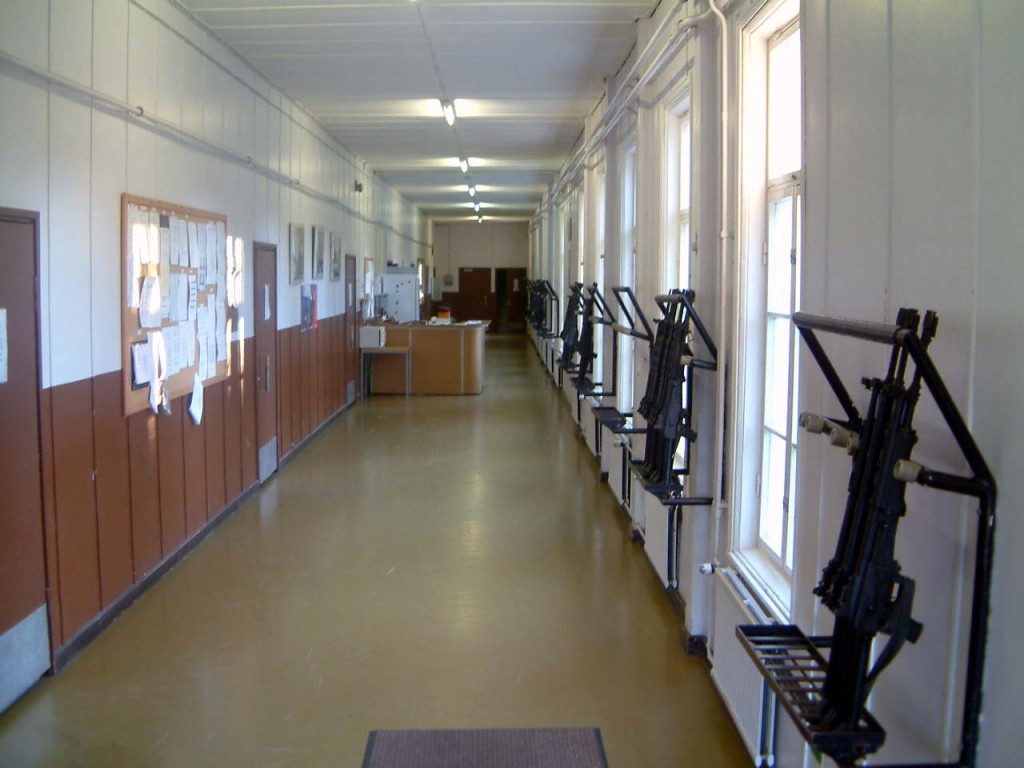
Örö – inside the old barracks
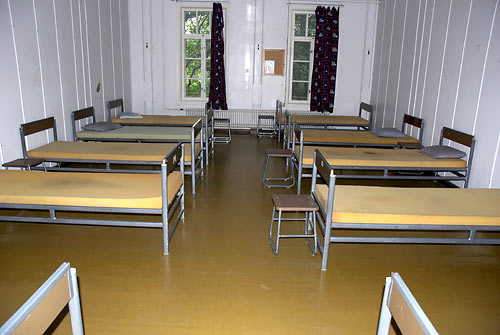
Örö – barracks accommodation
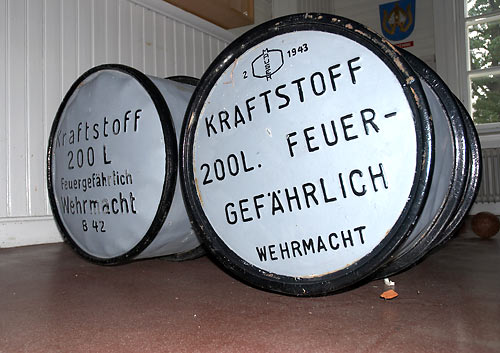
Örö – WW2 German beer barrels
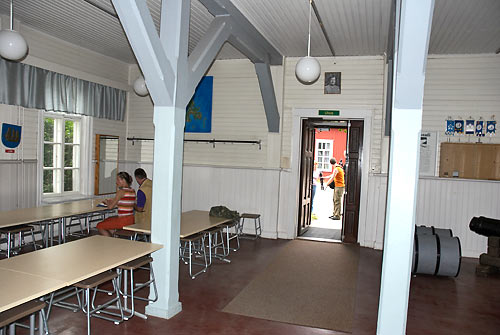
Örö – the old canteen
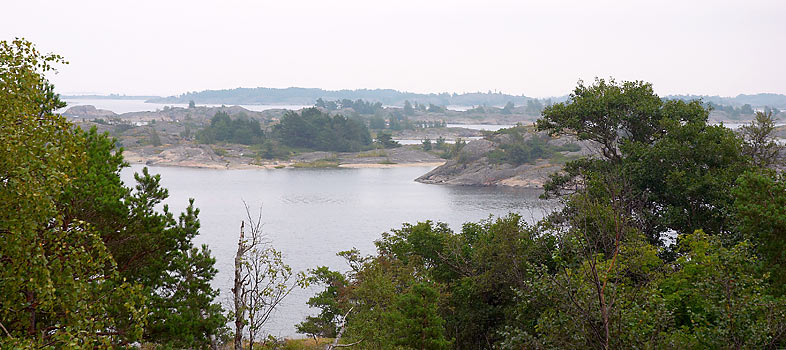
Örö – skerries and seascape
The Obukhovskii 12″/52 Pattern 1907 gun used by the main batteries on Örö was a Russian (and later Soviet) 305 mm (12 inch) naval gun. It was the most powerful gun to be mounted aboard battleships of the Imperial Russian Navy (or indeed, of the Soviet Navy). The design of the gun began in 1906 at the Obukhov factory and a prototype was completed in 1907. The Russian Navy initially ordered twenty guns from Obukhov at the end of 1907, with 178 more being ordered in the following years. 126 of these were delivered prior to 1917 (some sources say 144 guns). In 1917-18 an additional 42 guns were delivered, but after that point the Russian Civil War halted production until 1921 when 14 more guns were finished. In 1922 there were 29 guns at the factory at different stages of completion, some of which were subsequently finished.
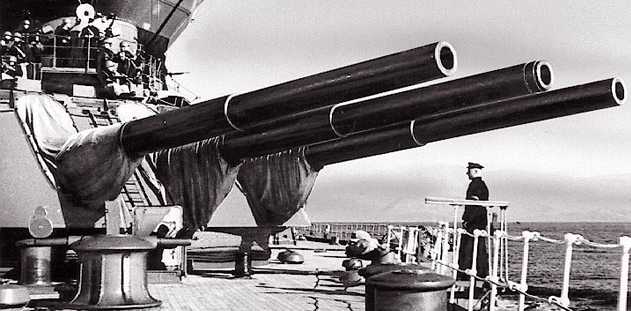
Obukhov 12″/52 (30.5 cm) Turret on an unidentified Russian Battleship
Allowable barrel life for pieces mounted aboard Black Sea Fleet units was 400 rounds per gun (the Finish military expected the same barrel life from their Obukhovskii barrels). The guns were considered excellent pieces, and were deployed aboard the Gangut and Imperatritsa Mariya class dreadnoughts in triple turret mountings designed and constructed by the Metallicheskii Works. These triple-gun turrets were designated “MK-3-12”. The battleships armed with these guns were known for their excellent shooting during World War I.
During her engagement with the German/Turkish battlecruiser Goeben/Yavuz on 8 January 1916, Imperatritsa Maria, firing into the sun at a range of about 20,000 meters, landed her first three salvos at 500, 100 and 50 meters short of the Turkish ship. As this distance was outside of her range, Yavuz was forced to run for home, pursued by the Russian dreadnought. Yavuz’s commander, Captain Richard Ackermann, later reported that “Imperatritsa Maria can run and shoot.” On 4 April 1916, Imperatritsa Maria’s sister-ship Ekaterina II straddled and then knocked the stem off the German/Turkish light cruiser Breslau/Midilli at about 21,000 meters.
In addition to being deployed aboard the Gangut class and Imperatritsa Mariya class battleships, these pieces were also emplaced as coastal artillery in the “Peter the Great” Naval Fortresses along the Tallinn-Porkkala (Gulf of Finland) defensive line in 1917, as well as being mounted as railway guns. Between wars the Soviet Union placed four four-gun batteries around the Baltic.
In January 1940 France gave twelve Obukhovskii 12-inch (305 mm) Pattern 1907 52-calibre guns from the ex-Imperial Russian Navy Imperatritsa Mariya-class dreadnought Imperator Aleksandr III to Finland, after refusing to sell seven to the Finns in the summer of 1939. The Imperator Aleksandr III was taken over by the Soviets and renamed Volia (“Freedom”) prior to completion. She did not take part in operations during World War I because her sister ships were given a higher priority for completion. She was delivered in 1917, but the disruptions of the February Revolution rendered the Black Sea Fleet ineffective and she saw no combat. Volia was surrendered to the Germans in 1918, where she was commissioned into the German Navy on 15 October 1918. The Germans were forced to turn her over to the British by the terms of the Armistice. The British turned her over to the White Russians in 1919 where she was renamed once more, this time as “General Alekseyev” and used to help evacuate White Russian forces from the Crimea in 1920.
She was interned in Bizerte (Tunisia) with the rest of Wrangel’s fleet. The French decided not to sell her back to the Soviet Union and she was sold for scrap in the late 1920s to pay her docking costs although she was not actually broken up until 1936. Her 12″ guns were put into storage while her smaller guns were used by the French in coastal batteries to defend the port of Bizerte. In January 1940 France gave them to Finland, after refusing to sell seven to the Finns in the summer of 1939. Three cargo ships were dispatched from Tunis to Finland and Norway, each with four guns. The two ships bound for Finland arrived safely with their eight guns. The Norwegian steamship Nina with her cargo of four guns was captured by the Germans in Narvik harbour in 1940 during the fighting in Norway.
The Germans emplaced all four guns, after rebuilding them to accept German ammunition, in armoured turrets in ‘Batterie Mirus’ on Guernsey. The Finns used four guns in coastal artillery positions at Isosaari and Mäkiluoto. Two other guns were used to repair Soviet TM-3-12 railway guns abandoned at Hanko when the Soviets evacuated in 1941 (these were found underwater in the Hanko harbour and salvaged – they needed major repairs, the barrels needed replacement and they entered service one by one between 1942 and 1944).
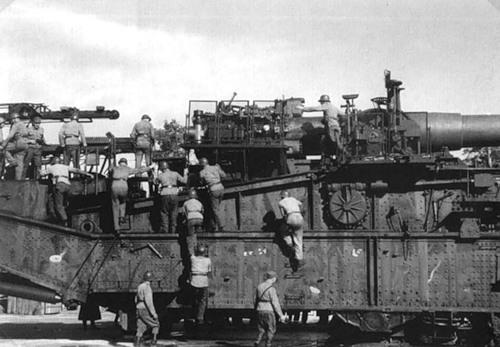
Finnish 305mm Railway Gun
Not just guns were repaired but also the whole gun trains that went with each gun, including signals and fire control systems. After the war these were handed over to the Soviet Union, where they were kept operational until the 1990s. The remaining two guns were kept as spares for the others, one of which was used to replace one gun damaged during tests with ‘super charges’ in the 1970s. One gun turret is now a memorial at Isosaari while the remaining spare barrel is preserved at the Finnish Coast Artillery Museum at Kuivasaari.
The Russians had built three railway guns , using guns from the sunken battleship Imperatritsa Mariya, which had been lost to a magazine explosion in Sevastopol harbor in October 1916. They were used in the Soviet-Finnish war in 1939-1940. In June–December 1941 they took part in the defense of the Soviet naval base on Finland’s Hanko peninsula (Rus. Gangut/ Гангут). They were disabled by Soviet seamen when the base was evacuated, but were later restored by Finnish specialists using guns from the Russian battleship Imperator Aleksander III. After the war these railway guns were handed over to the Soviet Union, where they were maintained in operational condition until 1991, being finally withdrawn from service in 1999. When withdrawn from service, they were the last battleship-caliber Obukhov pieces still operational in the world.
Below are a series of photos of Örö from SA-Kuva (the Finnish Defence Forces digitised Wartime Photograph Archive). The photos are dated October 1941, the date according to the original photo’s negative. This specific date may or may not be strictly accurate but the general time period is. These photos illustrate some facets of life on Örö as a coastal artillery fortress at war. Captions are in Finnish, but the large guns are all 12″ Obukhov pieces.
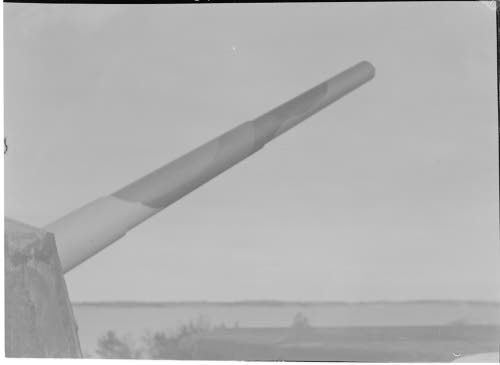
12″” kanuuna. Syys-lokakuu 1941. Örö
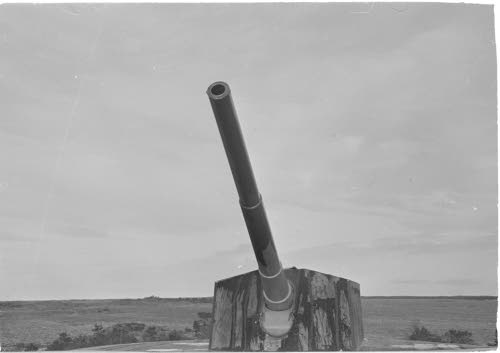
12 tuuman tykin tykkitorni.
Örö 1941.10.27
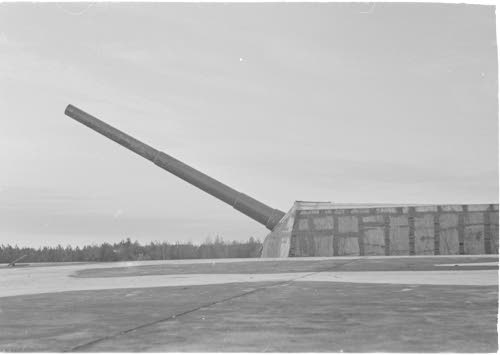
Tykkitorni. Örö 1941.10.27
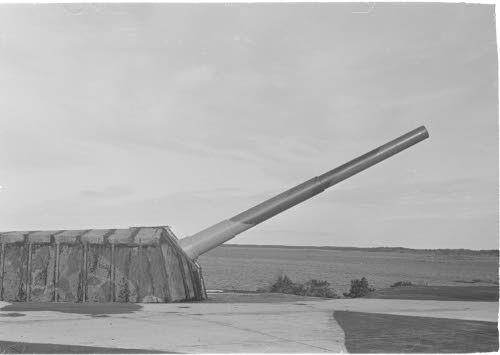
12 tuuman tykin tykkitorni.
Örö 1941.10.27
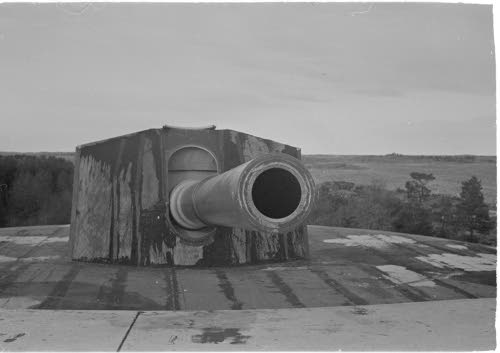
12 tuuman tykin tykkitorni.
Örö 1941.10.27
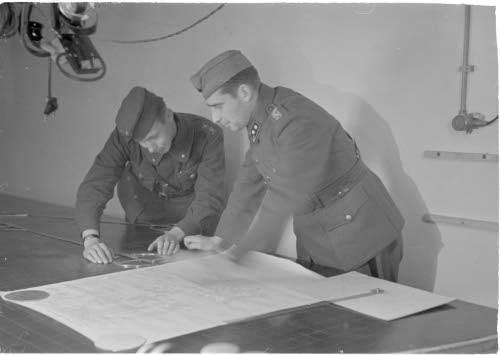
Tykinjohto upseerit. Örö 1941.10.27
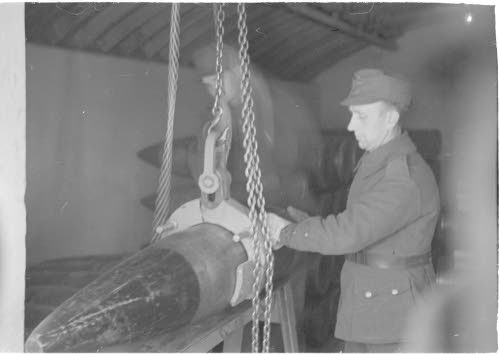
12 tuuman tykin tykkitorni, sisältä. Örö 1941.10.27
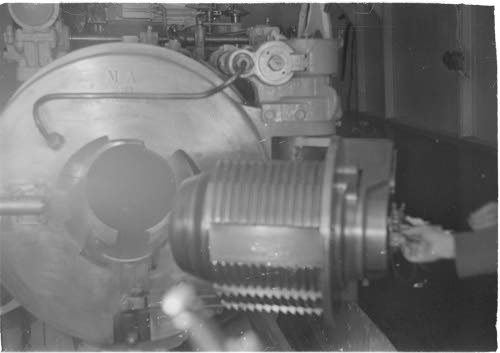
12 tuuman tykin tykkitorni, sisältä. Örö 1941.10.27
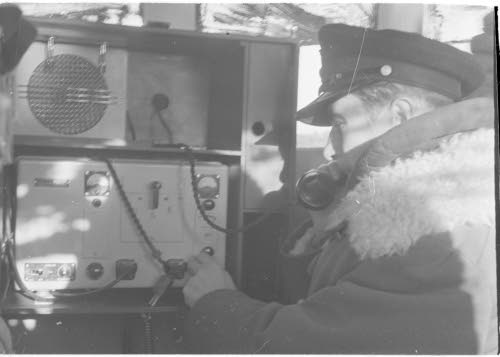
SM veneen radiopuhelin.
Örö 1941.10.27
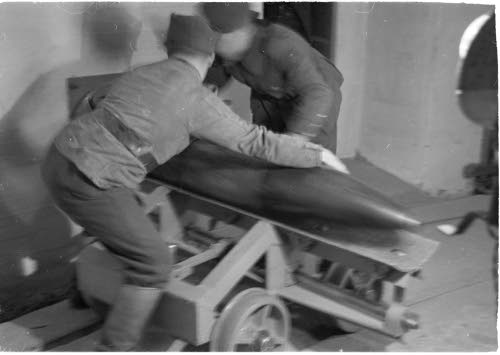
12 tuuman tykin tykkitorni, sisältä. Örö 1941.10.27
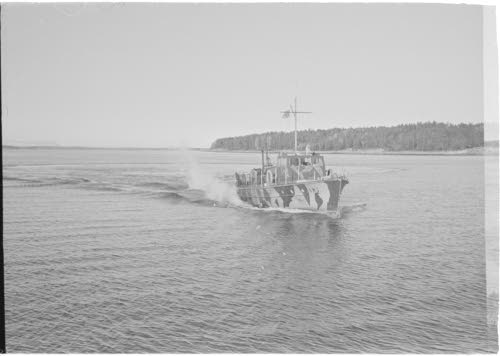
SM veneitä ulkosaaristossa.
Örö 1941.10.27
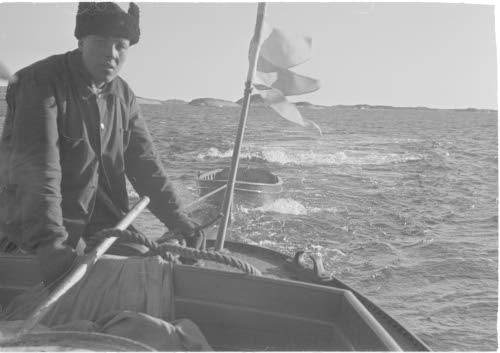
Miina kuljetetaan maihin.
Örö 1941.10.27
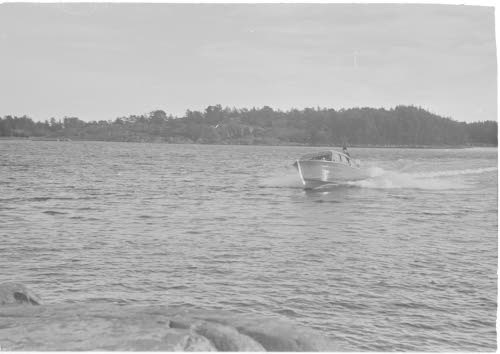
Vene vauhdissa.
Örö 1941.10.27
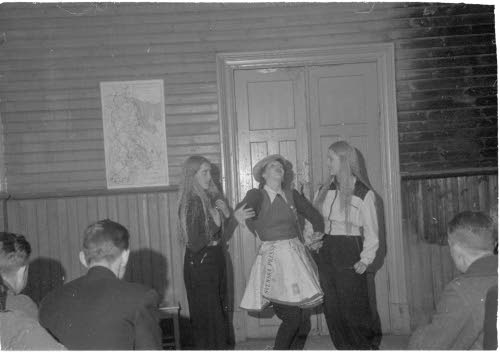
Lilla Teatteri vierailee erään ulkolinnakkeen sotilaskodissa.
Örö 1941.10.27
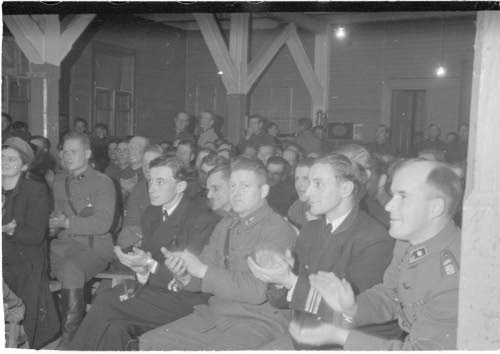
Osa yleisöä.
Örö 1941.10.27
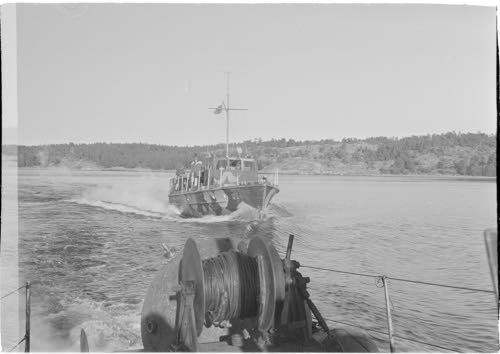
SM veneitä ulkosaaristossa.
Örö 1941.10.27
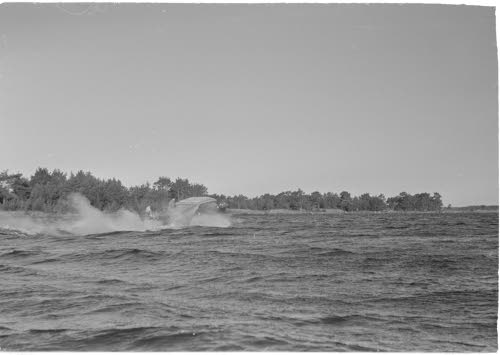
Vene vauhdissa.
Örö 1941.10.27
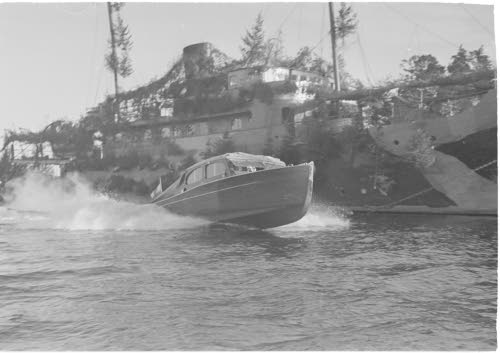
Pikakiitäjä lähtee sairaalalaivalta hakemaan uutta haavoittunutta.
Örö 1941.10.27
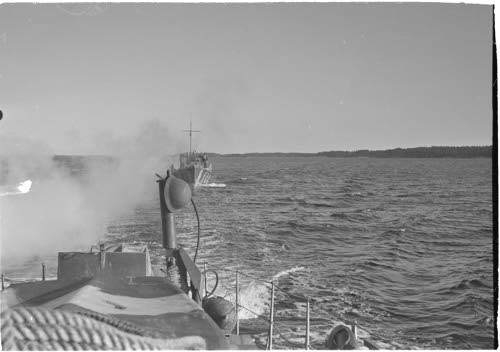
SM veneitä. Örö 1941.10.27
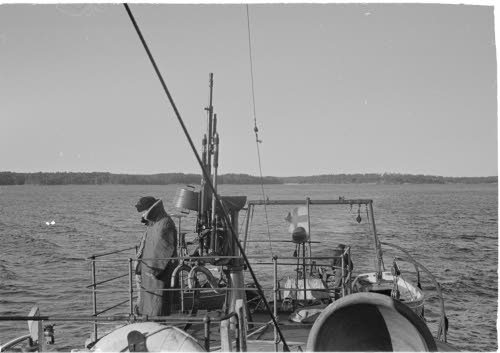
Miina alus Raudulta.
Örö 1941.10.27
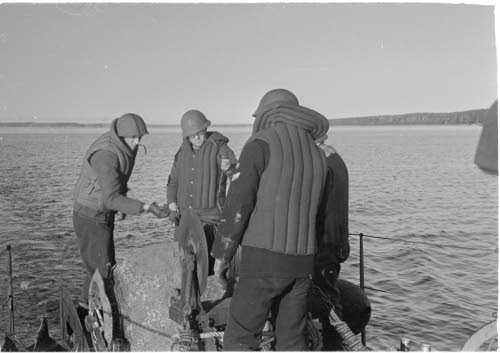
Miinanraivauskalustoa lasketaan SM veneeltä.
Örö 1941.10.27
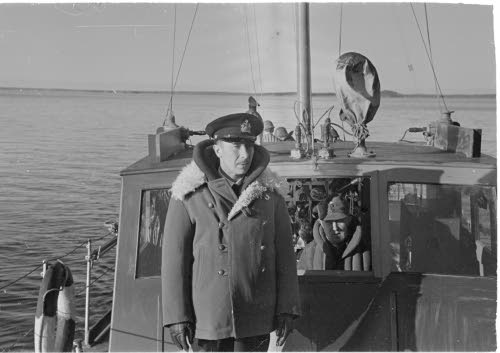
SM veneen päällikkö luutnantti Salkari.
Örö 1941.10.27
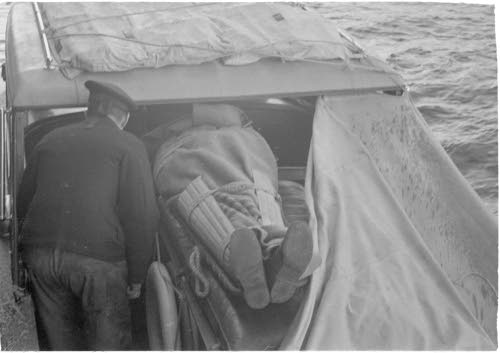
Haavoittunut on asetettu pikamoottoriin, jolla kuljetetaan sairaalalaivalle.
Örö 1941.10.27
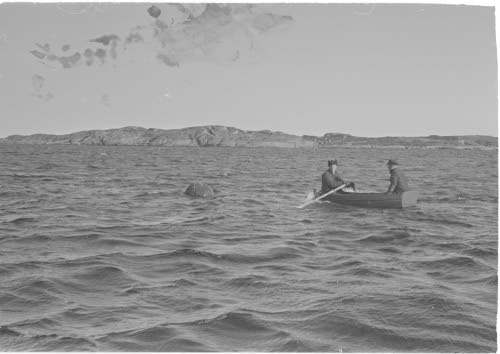
Miinamestari lähestyy veneellä miinaa. Örö 1941.10.27
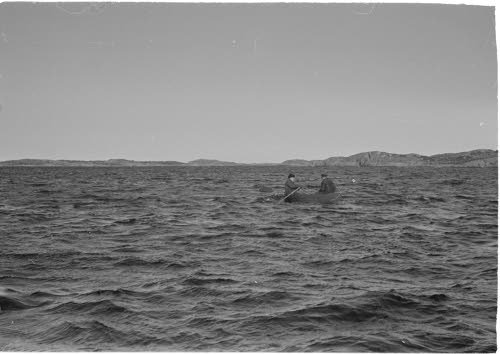
Miina tehdään vaarattomaksi. Örö 1941.10.27
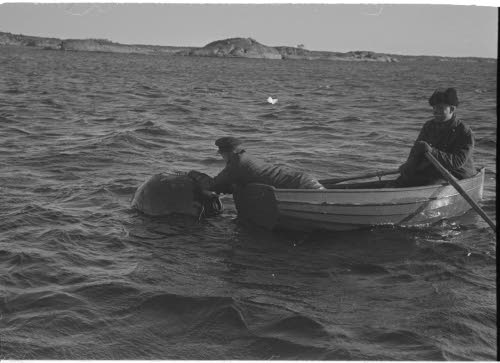
Miina tehdään vaarattomaksi. Örö 1941.10.27
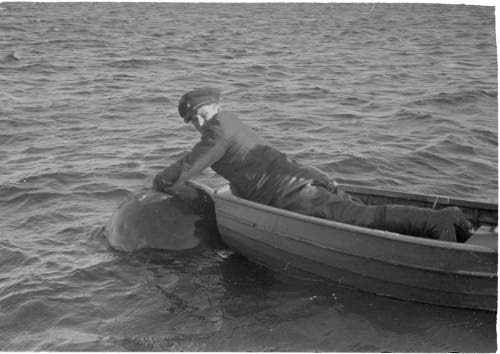
Miina tehdään vaarattomaksi. Örö 1941.10.27
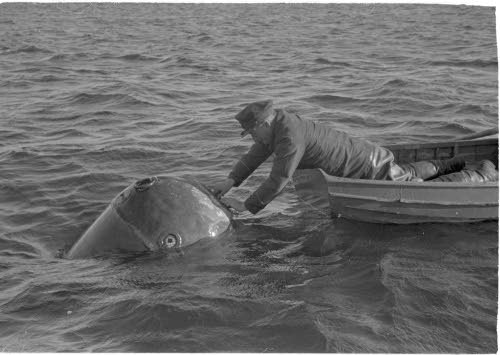
Miina tehdään vaarattomaksi. Örö 1941.10.27
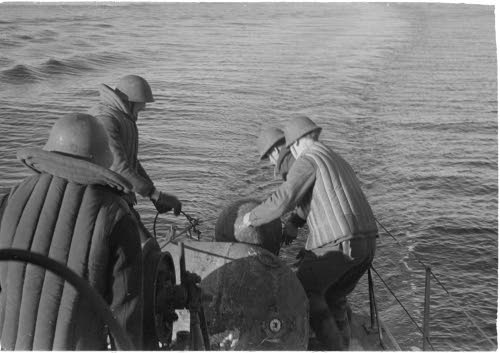
Miinanraivauskalustoa lasketaan SM veneeltä.
Örö 1941.10.27
The island and coastal artillery fortress of Örö is one of those places that’s worth visiting, and especially so if you’re interested in visiting a coastal artillery fortress – there’s not many left, and even less in this sort of condition.
And finally, here’s another video that Jöns Aschan made of a visit to Örö, 8. May 2015. Jöns filmed some of the interesting west shores of this island.
 Copyright secured by Digiprove © 2013 Alternative Finland
Copyright secured by Digiprove © 2013 Alternative Finland


Pingback: Kuivasaari Coastal Artillery Fortress – standing guard over Helsinki – Alternative Finland